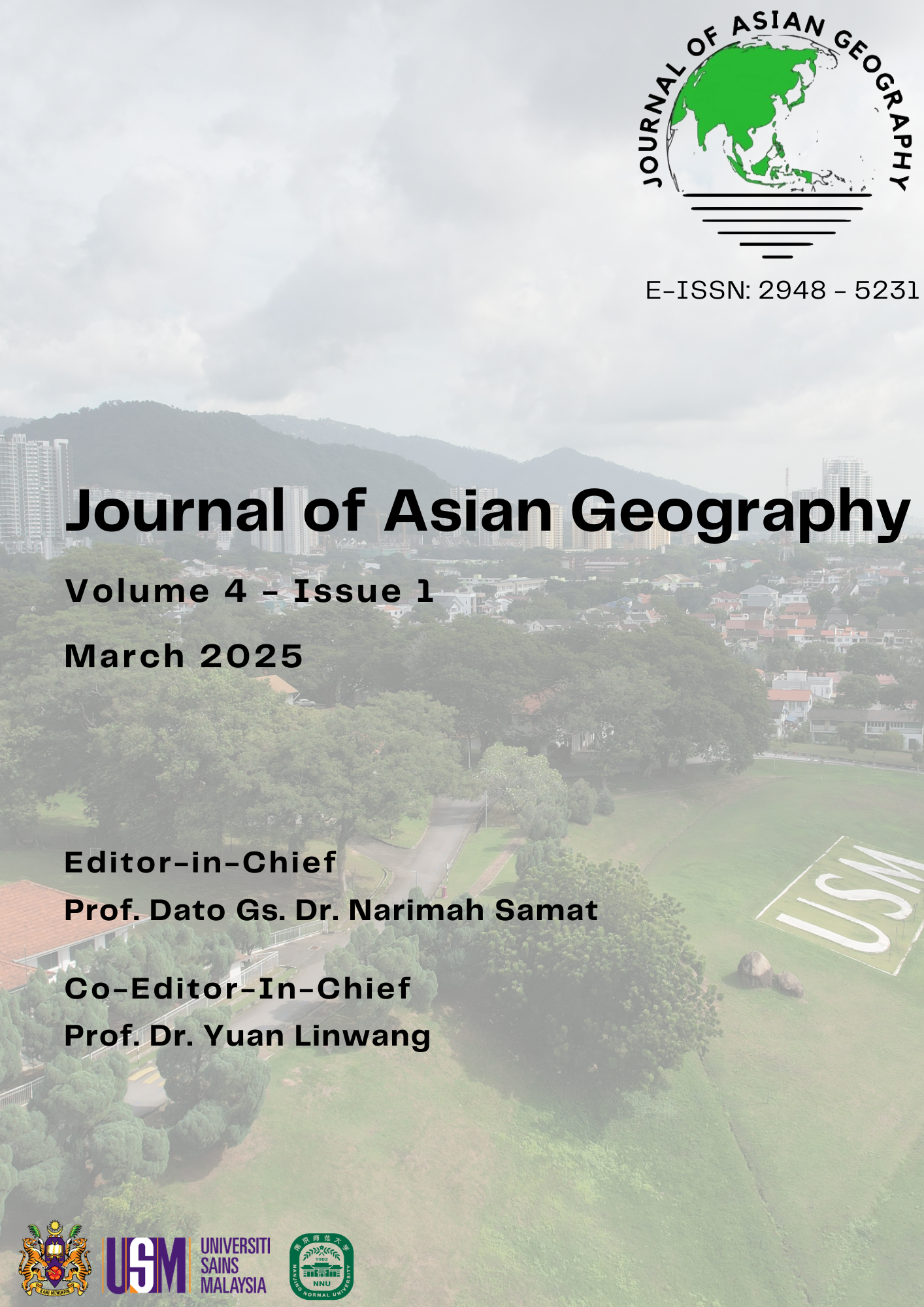The Role of Three Rivers Crossing the Urban Area on the Masamba 2020 Flash Floods
DOI:
https://doi.org/10.36777/jag2025.4.1.1Abstract
Masamba, the capital of North Luwu Regency in South Sulawesi Province, Indonesia, experienced a devastating flash flood in 2020. The disaster caused casualties, extensive damage to infrastructure and facilities, and the displacement of residents. This event resulted from a combination of high-intensity rainfall, topographical factors, and soil characteristics, which led to river overflows. From an environmental geography perspective, Masamba's urban area is intersected and flanked by multiple rivers. The floodwaters carried landslides and debris, including large chunks of wood, which accumulated in residential areas, damaging agricultural land and urban infrastructure. As the Earth's surface is entirely divided by river basins, Masamba's urban area is part of a watershed. A watershed, defined by ridges at its highest points, consists of interconnected rivers, where water naturally flows from higher elevations to lower areas (upstream to downstream), influencing the occurrence of flash floods. This study aims to identify the watersheds and rivers flowing through Masamba’s urban area. The research utilized NASADEM data and a detailed spatial plan (RDTR) map of Masamba. A Digital Elevation Model (DEM) was employed for spatial analysis to map the region’s topography. The findings revealed that three rivers—the Baliase River, the Masamba River, and the Radda River—cross the Masamba urban area. These rivers belong to a single watershed, the Masamba watershed, which covers 104,946.96 hectares. This research is vital for both the government and the community in protecting and maintaining watershed and river ecosystems from upstream to downstream. It also underscores the importance of river boundary policies and regional spatial planning in mitigating future flood risks.

Downloads
Published
Issue
Section
License
Copyright (c) 2025 Journal of Asian Geography

This work is licensed under a Creative Commons Attribution 4.0 International License.

